The Essence of Authentic Tomato Pasta Sauce: A Sumptuous Culinary Delight Introduction: Authentic tomato pasta sauce is a fundamental pillar of Italian cuisine. With its rich flavors and tantalizing aromas, this traditional sauce has been a favorite choice for pasta lovers worldwide. The authentic recipe dates back centuries and has evolved over time. In this article, we explore the origins of tomato pasta sauce and delve into the key ingredients, cooking techniques, and regional variations that contribute to its distinctive taste. 1. Origins of Tomato Pasta Sauce: The birthplace of tomato pasta sauce can be traced back to southern Italy in the late 18th century. Prior to the introduction of tomatoes, pasta was commonly prepared with olive oil, garlic, and various herbs. The discovery of the New World brought tomatoes to Europe, and they quickly became an essential ingredient in Italian cuisine. Initially, tomatoes were viewed with suspicion due to their similarity to poisonous nightshade plants. However, over time, their versatility and taste won over the hearts and palates of Italians.
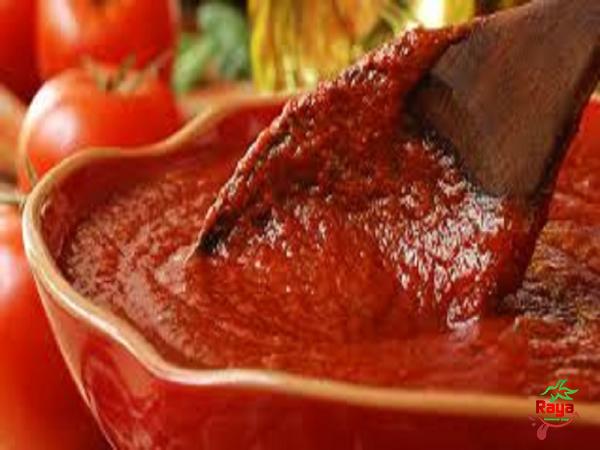
tomato paste
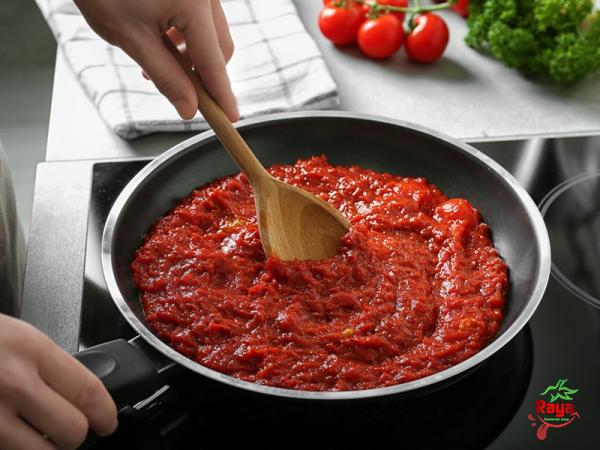 2. Key Ingredients: 2.1 Tomatoes: San Marzano tomatoes, known for their intense flavor and low acidity, are often the preferred choice for authentic tomato pasta sauce. However, other varieties, such as Roma or vine-ripened tomatoes, can also be used. Using fresh, ripe tomatoes during the peak season enhances the overall taste and ensures a sweet and tangy flavor profile. 2.2 Olive Oil: High-quality olive oil is another vital component of the sauce, adding richness and depth to the overall flavor. Extra virgin olive oil is the most desirable, contributing a fruity and peppery note that complements the sweetness of the tomatoes. 2.3 Garlic and Onions: These aromatics form the flavor base of the sauce. The garlic is often crushed or finely chopped, while onions are either diced or caramelized to add a subtle sweetness. 2.4 Herbs and Spices: Basil, oregano, and parsley are commonly used to infuse the sauce with a fragrant and herbaceous taste. Bay leaves, thyme, and red pepper flakes are additional seasonings that can be added to achieve desired flavor profiles. 2.5 Salt and Sugar: To balance flavors and enhance the natural sweetness of the tomatoes, carefully measured amounts of salt and sugar are added. The sugar also helps neutralize any acidic taste that might be present in the tomatoes. 3. Cooking Techniques: The traditional method of preparing authentic tomato pasta sauce involves slow cooking to allow the flavors to meld and develop. The time-consuming process ensures a rich, concentrated sauce that adheres to the pasta effectively. 3.1 Sauteing: The process typically begins with sautéing garlic and onions in olive oil until they become aromatic and slightly caramelized. This step forms the foundation of the sauce and creates a flavor base. 3.2 Tomato Preparation: The tomatoes are usually blanched, peeled, and deseeded before being added to the sauce. This step ensures a smoother texture, removes any bitterness, and eliminates excess water content from the tomatoes. 3.3 Simmering: The prepared tomatoes are combined with the sautéed garlic and onions, along with the desired herbs, spices, salt, and sugar. The sauce is simmered over low heat for a prolonged period, often ranging from one to three hours. This slow cooking process allows the flavors to meld together, intensifying the taste and texture of the sauce.
2. Key Ingredients: 2.1 Tomatoes: San Marzano tomatoes, known for their intense flavor and low acidity, are often the preferred choice for authentic tomato pasta sauce. However, other varieties, such as Roma or vine-ripened tomatoes, can also be used. Using fresh, ripe tomatoes during the peak season enhances the overall taste and ensures a sweet and tangy flavor profile. 2.2 Olive Oil: High-quality olive oil is another vital component of the sauce, adding richness and depth to the overall flavor. Extra virgin olive oil is the most desirable, contributing a fruity and peppery note that complements the sweetness of the tomatoes. 2.3 Garlic and Onions: These aromatics form the flavor base of the sauce. The garlic is often crushed or finely chopped, while onions are either diced or caramelized to add a subtle sweetness. 2.4 Herbs and Spices: Basil, oregano, and parsley are commonly used to infuse the sauce with a fragrant and herbaceous taste. Bay leaves, thyme, and red pepper flakes are additional seasonings that can be added to achieve desired flavor profiles. 2.5 Salt and Sugar: To balance flavors and enhance the natural sweetness of the tomatoes, carefully measured amounts of salt and sugar are added. The sugar also helps neutralize any acidic taste that might be present in the tomatoes. 3. Cooking Techniques: The traditional method of preparing authentic tomato pasta sauce involves slow cooking to allow the flavors to meld and develop. The time-consuming process ensures a rich, concentrated sauce that adheres to the pasta effectively. 3.1 Sauteing: The process typically begins with sautéing garlic and onions in olive oil until they become aromatic and slightly caramelized. This step forms the foundation of the sauce and creates a flavor base. 3.2 Tomato Preparation: The tomatoes are usually blanched, peeled, and deseeded before being added to the sauce. This step ensures a smoother texture, removes any bitterness, and eliminates excess water content from the tomatoes. 3.3 Simmering: The prepared tomatoes are combined with the sautéed garlic and onions, along with the desired herbs, spices, salt, and sugar. The sauce is simmered over low heat for a prolonged period, often ranging from one to three hours. This slow cooking process allows the flavors to meld together, intensifying the taste and texture of the sauce.
Specifications of tomato paste
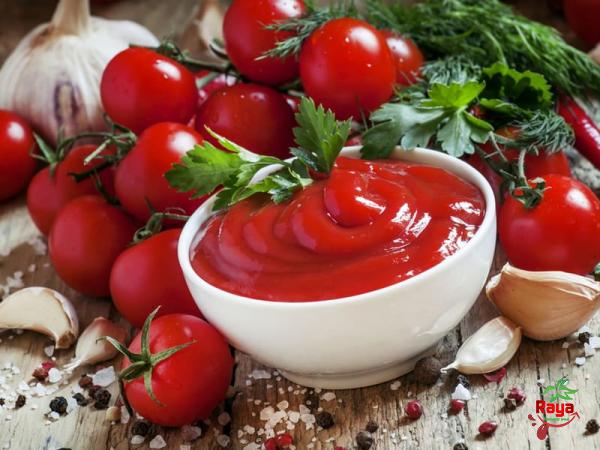 4. Regional Variations: While the authentic tomato pasta sauce recipe forms the culinary base, regional variations have emerged throughout Italy due to differing local ingredients and regional preferences. Several notable variations include: 4.1 Bolognese Sauce: Originating from the city of Bologna, this rich sauce traditionally combines ground meat, such as beef or pork, with tomatoes and other vegetables. The slow simmering process results in a dense and meaty sauce. 4.2 Neapolitan Sauce: Hailing from Naples, this tomato sauce is characterized by the inclusion of small, whole tomatoes, which are gently cooked with garlic and fresh basil. The sauce possesses a bright, vibrant flavor and is often used in classic Neapolitan dishes like spaghetti alla marinara. 4.3 Sicilian Sauce: Influenced by the island’s diverse cultural heritage, Sicilian tomato pasta sauce incorporates various ingredients such as capers, olives, anchovies, and eggplants. This complex sauce is known for its robust and savory flavors. 5. Conclusion: Authentic tomato pasta sauce is a culinary masterpiece that reflects Italy’s rich gastronomic heritage. With the use of fresh tomatoes, aromatic herbs, high-quality olive oil, and a well-balanced combination of spices, this sauce has become a staple in numerous pasta dishes the world over. Whether you prefer the classic simplicity of Neapolitan sauce or the hearty depth of Bolognese, the essence of authentic tomato pasta sauce remains a testament to timeless Italian cuisine.I. The Business of Authentic Tomato Pasta Sauce Authentic tomato pasta sauce holds immense business potential in the food industry. From small local establishments to large-scale operations, the demand for high-quality, authentic tomato pasta sauce is ever-growing. This section explores the business aspects of producing and marketing this cherished culinary delight. 1. Market Analysis: The global market for pasta sauces is expected to witness steady growth in the coming years, driven by the increasing preference for convenient and ready-to-use meal solutions. A key segment of this market is the demand for authentic tomato pasta sauce. Consumers are becoming more discerning, seeking products that align with their desire for authentic, high-quality ingredients and traditional recipes. This offers an opportunity for businesses to tap into the burgeoning market by offering genuine, artisanal tomato pasta sauce options. 2. Product Differentiation: To thrive in a competitive market, businesses must focus on differentiating their authentic tomato pasta sauce offerings. This can be achieved by emphasizing the use of premium, locally sourced ingredients, such as heirloom tomatoes or herbs from specific regions. Highlighting the traditional cooking techniques and regional variations can also add value and attract customers seeking an authentic culinary experience.
4. Regional Variations: While the authentic tomato pasta sauce recipe forms the culinary base, regional variations have emerged throughout Italy due to differing local ingredients and regional preferences. Several notable variations include: 4.1 Bolognese Sauce: Originating from the city of Bologna, this rich sauce traditionally combines ground meat, such as beef or pork, with tomatoes and other vegetables. The slow simmering process results in a dense and meaty sauce. 4.2 Neapolitan Sauce: Hailing from Naples, this tomato sauce is characterized by the inclusion of small, whole tomatoes, which are gently cooked with garlic and fresh basil. The sauce possesses a bright, vibrant flavor and is often used in classic Neapolitan dishes like spaghetti alla marinara. 4.3 Sicilian Sauce: Influenced by the island’s diverse cultural heritage, Sicilian tomato pasta sauce incorporates various ingredients such as capers, olives, anchovies, and eggplants. This complex sauce is known for its robust and savory flavors. 5. Conclusion: Authentic tomato pasta sauce is a culinary masterpiece that reflects Italy’s rich gastronomic heritage. With the use of fresh tomatoes, aromatic herbs, high-quality olive oil, and a well-balanced combination of spices, this sauce has become a staple in numerous pasta dishes the world over. Whether you prefer the classic simplicity of Neapolitan sauce or the hearty depth of Bolognese, the essence of authentic tomato pasta sauce remains a testament to timeless Italian cuisine.I. The Business of Authentic Tomato Pasta Sauce Authentic tomato pasta sauce holds immense business potential in the food industry. From small local establishments to large-scale operations, the demand for high-quality, authentic tomato pasta sauce is ever-growing. This section explores the business aspects of producing and marketing this cherished culinary delight. 1. Market Analysis: The global market for pasta sauces is expected to witness steady growth in the coming years, driven by the increasing preference for convenient and ready-to-use meal solutions. A key segment of this market is the demand for authentic tomato pasta sauce. Consumers are becoming more discerning, seeking products that align with their desire for authentic, high-quality ingredients and traditional recipes. This offers an opportunity for businesses to tap into the burgeoning market by offering genuine, artisanal tomato pasta sauce options. 2. Product Differentiation: To thrive in a competitive market, businesses must focus on differentiating their authentic tomato pasta sauce offerings. This can be achieved by emphasizing the use of premium, locally sourced ingredients, such as heirloom tomatoes or herbs from specific regions. Highlighting the traditional cooking techniques and regional variations can also add value and attract customers seeking an authentic culinary experience.
buy tomato paste
 4. Regional Variations: While the authentic tomato pasta sauce recipe forms the culinary base, regional variations have emerged throughout Italy due to differing local ingredients and regional preferences. Several notable variations include: 4.1 Bolognese Sauce: Originating from the city of Bologna, this rich sauce traditionally combines ground meat, such as beef or pork, with tomatoes and other vegetables. The slow simmering process results in a dense and meaty sauce. 4.2 Neapolitan Sauce: Hailing from Naples, this tomato sauce is characterized by the inclusion of small, whole tomatoes, which are gently cooked with garlic and fresh basil. The sauce possesses a bright, vibrant flavor and is often used in classic Neapolitan dishes like spaghetti alla marinara. 4.3 Sicilian Sauce: Influenced by the island’s diverse cultural heritage, Sicilian tomato pasta sauce incorporates various ingredients such as capers, olives, anchovies, and eggplants. This complex sauce is known for its robust and savory flavors. 5. Conclusion: Authentic tomato pasta sauce is a culinary masterpiece that reflects Italy’s rich gastronomic heritage. With the use of fresh tomatoes, aromatic herbs, high-quality olive oil, and a well-balanced combination of spices, this sauce has become a staple in numerous pasta dishes the world over. Whether you prefer the classic simplicity of Neapolitan sauce or the hearty depth of Bolognese, the essence of authentic tomato pasta sauce remains a testament to timeless Italian cuisine.I. The Business of Authentic Tomato Pasta Sauce Authentic tomato pasta sauce holds immense business potential in the food industry. From small local establishments to large-scale operations, the demand for high-quality, authentic tomato pasta sauce is ever-growing. This section explores the business aspects of producing and marketing this cherished culinary delight. 1. Market Analysis: The global market for pasta sauces is expected to witness steady growth in the coming years, driven by the increasing preference for convenient and ready-to-use meal solutions. A key segment of this market is the demand for authentic tomato pasta sauce. Consumers are becoming more discerning, seeking products that align with their desire for authentic, high-quality ingredients and traditional recipes. This offers an opportunity for businesses to tap into the burgeoning market by offering genuine, artisanal tomato pasta sauce options. 2. Product Differentiation: To thrive in a competitive market, businesses must focus on differentiating their authentic tomato pasta sauce offerings. This can be achieved by emphasizing the use of premium, locally sourced ingredients, such as heirloom tomatoes or herbs from specific regions. Highlighting the traditional cooking techniques and regional variations can also add value and attract customers seeking an authentic culinary experience.
4. Regional Variations: While the authentic tomato pasta sauce recipe forms the culinary base, regional variations have emerged throughout Italy due to differing local ingredients and regional preferences. Several notable variations include: 4.1 Bolognese Sauce: Originating from the city of Bologna, this rich sauce traditionally combines ground meat, such as beef or pork, with tomatoes and other vegetables. The slow simmering process results in a dense and meaty sauce. 4.2 Neapolitan Sauce: Hailing from Naples, this tomato sauce is characterized by the inclusion of small, whole tomatoes, which are gently cooked with garlic and fresh basil. The sauce possesses a bright, vibrant flavor and is often used in classic Neapolitan dishes like spaghetti alla marinara. 4.3 Sicilian Sauce: Influenced by the island’s diverse cultural heritage, Sicilian tomato pasta sauce incorporates various ingredients such as capers, olives, anchovies, and eggplants. This complex sauce is known for its robust and savory flavors. 5. Conclusion: Authentic tomato pasta sauce is a culinary masterpiece that reflects Italy’s rich gastronomic heritage. With the use of fresh tomatoes, aromatic herbs, high-quality olive oil, and a well-balanced combination of spices, this sauce has become a staple in numerous pasta dishes the world over. Whether you prefer the classic simplicity of Neapolitan sauce or the hearty depth of Bolognese, the essence of authentic tomato pasta sauce remains a testament to timeless Italian cuisine.I. The Business of Authentic Tomato Pasta Sauce Authentic tomato pasta sauce holds immense business potential in the food industry. From small local establishments to large-scale operations, the demand for high-quality, authentic tomato pasta sauce is ever-growing. This section explores the business aspects of producing and marketing this cherished culinary delight. 1. Market Analysis: The global market for pasta sauces is expected to witness steady growth in the coming years, driven by the increasing preference for convenient and ready-to-use meal solutions. A key segment of this market is the demand for authentic tomato pasta sauce. Consumers are becoming more discerning, seeking products that align with their desire for authentic, high-quality ingredients and traditional recipes. This offers an opportunity for businesses to tap into the burgeoning market by offering genuine, artisanal tomato pasta sauce options. 2. Product Differentiation: To thrive in a competitive market, businesses must focus on differentiating their authentic tomato pasta sauce offerings. This can be achieved by emphasizing the use of premium, locally sourced ingredients, such as heirloom tomatoes or herbs from specific regions. Highlighting the traditional cooking techniques and regional variations can also add value and attract customers seeking an authentic culinary experience.

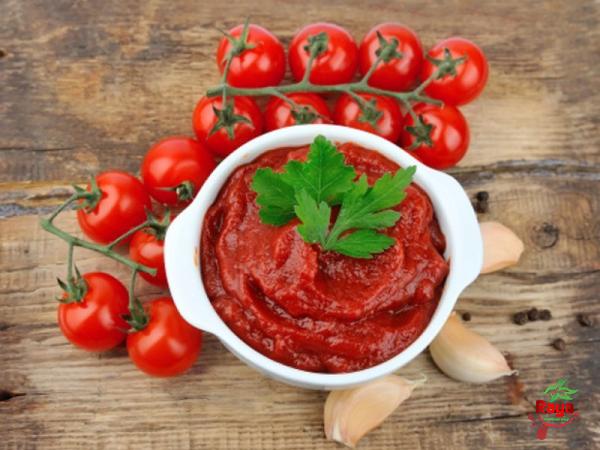
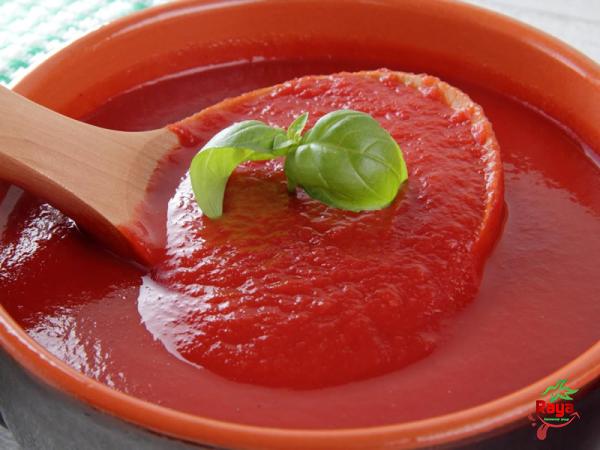


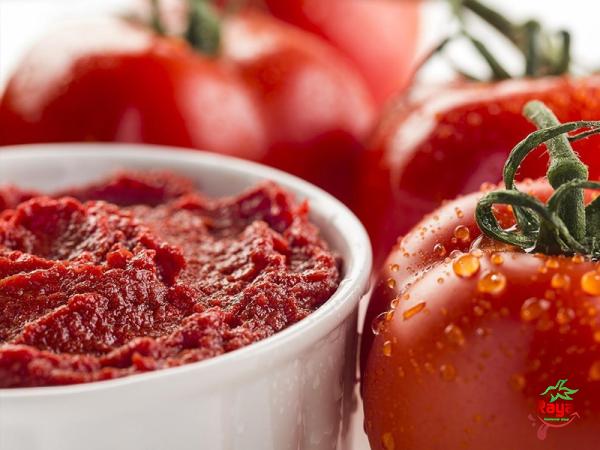



Your comment submitted.